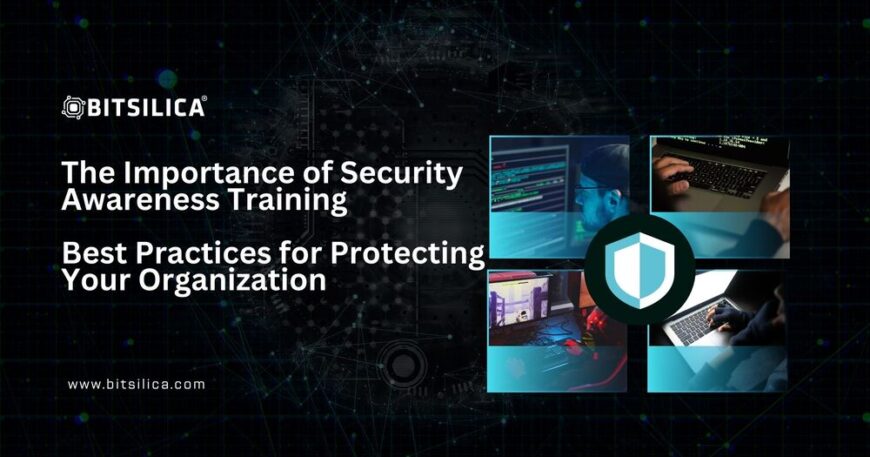The Importance of Security Awareness Training: Best Practices for Protecting Your Organization
Introduction
Security awareness training is a critical component of an organization’s cyber security strategy. It equips employees with the knowledge and skills needed to recognize and respond to security threats, reducing the risk of data breaches and other security incidents. This blog post will explore best practices for implementing effective security awareness training, with real-world examples to illustrate its importance.
Understanding Security Awareness Training
Security awareness training involves educating employees about cyber security best practices, potential threats, and how to protect sensitive information. It aims to create a culture of security within the organization.
Key Components of Security Awareness Training:
• Phishing Awareness: Training employees to recognize and avoid phishing attacks.
• Password Security: Educating employees on the importance of strong passwords and multi-factor authentication.
• Data Protection: Teaching employees how to handle and protect sensitive information.
• Incident Reporting: Encouraging employees to report suspicious activities and potential security incidents.
Example: In 2019, a study found that organizations with regular security awareness training experienced 70% fewer successful phishing attacks compared to those without such training.
Implementing a Comprehensive Training Program
A comprehensive security awareness training program covers a wide range of topics and uses various methods to engage employees.
Best Practices:
• Interactive Modules: Use interactive online training modules to engage employees and enhance learning.
• Regular Updates: Update training content regularly to reflect the latest threats and best practices.
• In-Person Sessions: Supplement online training with in-person or virtual sessions led by security experts.
• Varied Content: Include videos, quizzes, and real-life scenarios to make the training more engaging and effective.
Example: A tech company implemented a comprehensive training program with interactive modules and regular updates, significantly improving its employees’ ability to recognize and respond to security threats.
Tailoring Training to Different Roles
Different roles within the organization may have different security training needs. Tailoring the training to specific roles ensures that employees receive relevant information.
Best Practices:
• Role-Based Training: Develop training content specific to different roles, such as developers, HR personnel, and executives.
• Job-Specific Scenarios: Include scenarios and examples relevant to each role to make the training more applicable.
• Continuous Learning: Provide ongoing training and resources to keep employees updated on the latest threats and best practices.
Example: A financial institution tailored its security awareness training to different roles, providing developers with specific guidance on secure coding practices and HR personnel with training on handling sensitive employee data.
Encouraging a Culture of Security
Creating a culture of security involves promoting security awareness and encouraging employees to take an active role in protecting the organization.
Best Practices:
• Leadership Support: Ensure that leadership supports and promotes security awareness initiatives.
• Employee Engagement: Encourage employees to participate in security training and provide feedback on the training content.
• Recognition and Rewards: Recognize and reward employees who demonstrate strong security practices and contribute to the organization’s security efforts.
Example: An organization that promoted a culture of security saw increased employee engagement in security initiatives and a significant reduction in security incidents.
Measuring the Effectiveness of Training
Regularly measuring the effectiveness of security awareness training helps identify areas for improvement and ensures that the training is achieving its objectives.
Best Practices:
• Assessments and Quizzes: Use assessments and quizzes to test employees’ knowledge and understanding of the training content.
• Phishing Simulations: Conduct regular phishing simulations to gauge employees’ ability to recognize and respond to phishing attacks.
• Feedback Mechanisms: Gather feedback from employees on the training content and delivery methods to make continuous improvements.
Example: A healthcare provider conducted regular phishing simulations and used the results to refine its training program, leading to a 50% decrease in successful phishing attacks.
Ensuring Mandatory Participation
Mandatory participation in security awareness training ensures that all employees receive the necessary knowledge and skills to protect the organization.
Best Practices:
• Onboarding Training: Require all new hires to complete security awareness training as part of their onboarding process.
• Annual Refresher Training: Mandate annual refresher training for all employees to keep their knowledge up to date.
• Tracking and Compliance: Track training completion and ensure compliance through regular audits and reporting.
Example: A company that mandated annual security awareness training for all employees saw a significant improvement in its overall security posture and a reduction in security incidents.
Security awareness training is essential for protecting an organization from cyber threats. By implementing a comprehensive training program, tailoring training to different roles, promoting a culture of security, measuring effectiveness, and ensuring mandatory participation, organizations can significantly enhance their security awareness efforts. Stay vigilant and proactive in your security awareness initiatives to safeguard against evolving cyber threats.





